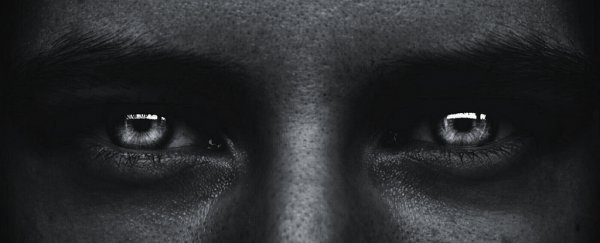Fear is a common response to darkness, especially in children, and now scientists think they might have figured out the brain mechanisms behind it, mechanisms that work in a couple of areas of the brain in particular.
The amygdala section of the brain is responsible for processing emotion and regulating our fear response, and a new study highlights how brain activity in this region changes as we're exposed to light and darkness.
"Light, compared with dark, suppressed activity in the amygdala," write the researchers in their published paper. "Moderate light exposure resulted in greater suppression of amygdala activity than dim light."
What's more, the presence of light seems to strengthen the link between the amygdala and the ventromedial prefrontal cortex, another part of the brain that's associated with controlling our sense of fear.
In this new piece of research, fMRI brain scans from 23 people were analyzed as they were exposed to 30-second periods of dim (10 lux) and moderate (100 lux) lighting, as well as darkness (less than 1 lux). The scans lasted around 30 minutes in total.
The moderate lighting was shown to cause a "significant reduction" in amygdala activity, with dim lighting causing a smaller reduction. There was also greater "functional connectivity" between the amygdala and the ventromedial prefrontal cortex during the times when the lights were on.
In other words, light might keep our brain's fear management centers in operation, based on this small sample of volunteers. We'll need more data to figure out what exactly is happening, but disconnects between these brain areas have previously been linked to anxiety.
"These effects may contribute to light's mood-elevating effects, via a reduction in negative, fear-related affect and enhanced processing of negative emotion," write the researchers.
The connection between light, darkness, and activity in the brain is well established: changes in light help us know when to sleep, have an impact on our levels of alertness, and can affect our mood as well.
It's possible that being able to control exposure to light – something that we've only been capable of very recently in our evolutionary history – could be one way of tackling this particular phobia. Light therapy treatments are already widely used for conditions such as depression, though scientists don't fully understand how or why they work.
The key could lie in what are called intrinsically photosensitive retinal ganglion cells (ipRGCs), which take light in from the eyes and transmit it to different parts of the brain. The next step is learning more about how they interact with the amygdala.
"Further work will be needed to begin to understand the unique contribution of different subsets of ipRGCs, and other photoreceptors, to both the visual and non-visual aspects of light responses," write the researchers.
The research has been published in PLOS One.
